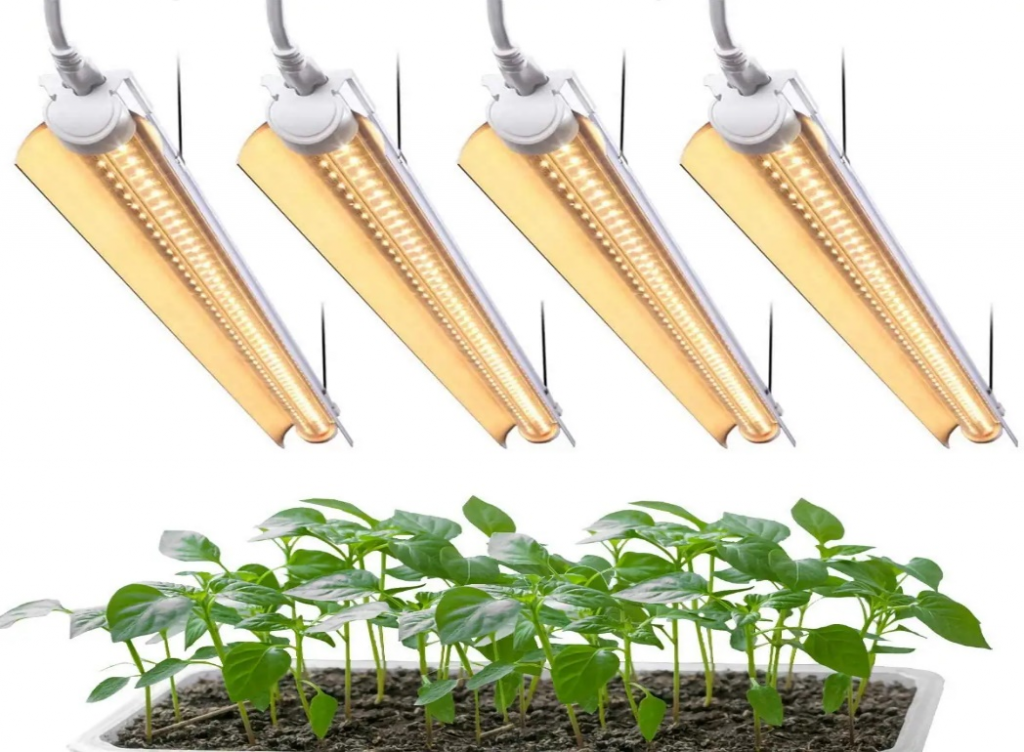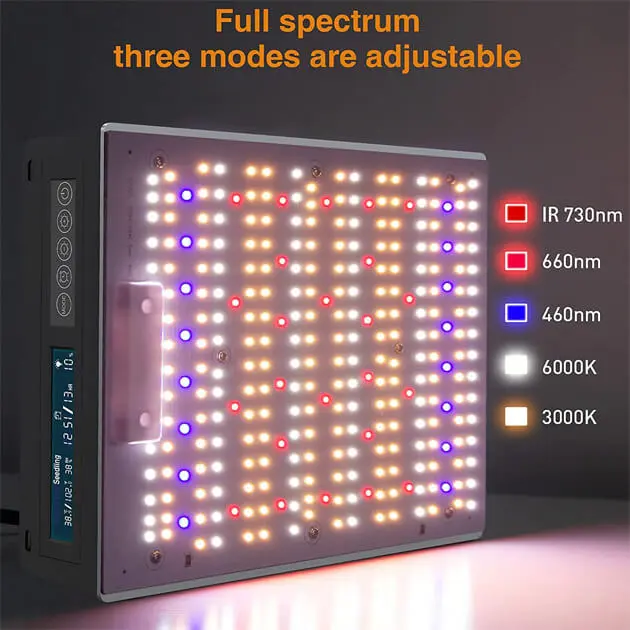What types of light influence cultivation?
The subject “plant lighting” has been debated here for some time, because light is one of the most important factors for the development of plants. This time, we’re going a little deeper, we’ll discuss what types of light influence cultivation. To understand some terms uses here, we recommend that you see the post “how efficient is the grow light”.

The amount of light is as important as its quality.
You should know that the basic components for plant development are air, water and light. It is from these items that photosynthesis occurs and, at the same time, the formation of biomass. To ensure the efficiency of this plant lighting, the amount of light that the plant receives is as important as its quality.
When we talk about quantity of light, we are referring to the intensity, and when we say quality, we are talking about the quality of the spectrum. For example, sunlight is made up of various frequencies (or colors) of light, resulting in the white light we see. When sunlight refract, normally due to water particles present in the sky, rainbows form.
Light is very important for plants for their development
That is, the plant lighting divide and we can clearly observe the different colors that make up the sunlight. However, in addition to the colors of the rainbow, sunlight also compose of other colors (with other frequencies) that are not visible to the naked eye. These colors, although invisible to humans, are very important for plants and their development.
Light Bands – perform two very important functions
Far Reds, or even long reds, perform two very important functions in plants. One of them is known as the Emerson Effect, which is the sum of the frequency of red light (660nm) and the frequency of Far Reds (730nm). The result of this plant lighting is a photosynthetic potential greater than the sum of the individual potentials of the two colors.
That is, it enhances photosynthesis much more, which gives energy to plants. Another effect from Far Reds is directly related to the production of grow flowers. This is due to phytochrome, a pigment present in plants that responds to light periodicity, such as sunrise and sunset.
The concentration of red light is greater than the concentration of Far Reds
During the day, the concentration of red light is greater than the concentration of Far Reds, which encourages plant lighting to remain in its active form and makes the plant understand that it is time to carry out photosynthesis.

The concentration of Far Reds is higher than that of red light
When the sun sets, the concentration of Far Reds is higher than that of red light, this induces phytochrome to change to the inactive form. Thus, the plant understands that it is time to convert glucose, produce in photosynthesis, into flowers.
By simulating the sunset, the plants receive a signal to sleep immediately, gaining 1-2 hours of sleep per night. It is these extra hours of sleep that make them mature earlier, reducing the flowering cycle by up to 5 days.
Plant lighting: green light is the reflected color
When we see an object in blue color, it means that it is reflecting this color and absorbing the others that provided. As the leaves are green, it deduced the reflected color, while the rest absorbed by the plant. However, today it is known that this is not true.
Only a small amount of green light is reflected, but 50-90% of it absorb and uses in photosynthesis. It turns out that blue and red light absorb on the surface of the leaves, while green light absorbs in the deeper layers. Even in these layers the green light is more efficient in the production of glucose than the red and blue ones.
Why white LEDS are better than conventional LEDS without green light?
When we cultivate using plant lighting (above 900-1000 PPFD), the greatest photosynthetic potential of plants happens to be in the deeper layers, where green light is more efficient. That’s why white LEDs are better than conventional LEDs without green light. They are also better than HPS lights, which have most of the spectrum in yellow and red light, and little green and blue.
What is the most efficient lighting system for the grow?
We’ve already seen what types of light influence cultivation, but what is the most efficient lighting system for the grow?
In addition to LED systems, there are also COBs and Quantum Boards. COBs (Chip on Board) are white LED chips that combine multiple diodes. As a result of this, the plant lighting distribution is exceptionally better. QBs, in turn, are very similar to COBs, but with an even greater number of diodes. This difference seems small, but it is what even better distributes the emitted light.
Quantum Boards generate less heat for indoor growers
In addition, Quantum Boards generate much less heat, which is very satisfying for indoor growers. On the other hand, COBs project the light better, that is, they can position further away from the plants without losing efficiency.
The market trend towards grow plant lighting is to migrate from HPS / HQI lights to COBs and Quantum Boards. These systems are more efficient than ordinary LEDs and usually bring not only visible lights, but include green light and Far Reds.
LED grow lights have high technology
It allows their targeted use with the ideal spectrum for plants in each phase, which reduces the cost compared to high pressure vapor lights, as we have ultraviolet and infrared spectra in a single product.
Another advantage is that the LED has low heat emission, which will provide a better use of electrical energy, which causes lower consumption and great savings. There will also be no influence on the temperature of the grow room, avoiding unnecessary heat for the plants.
The plant lighting causes of energy savings and greater productivity
Although the value of LED lights is higher compared to other lights, the investment has a return through energy savings and greater productivity that these lights provide.
In addition to indoor cultivation, LED lights can also be uses to light up aquariums with marine plants such as algae and corals.
In conclusion, it is very important that you know how to choose the ideal grow lamp for your indoor cultivation.



